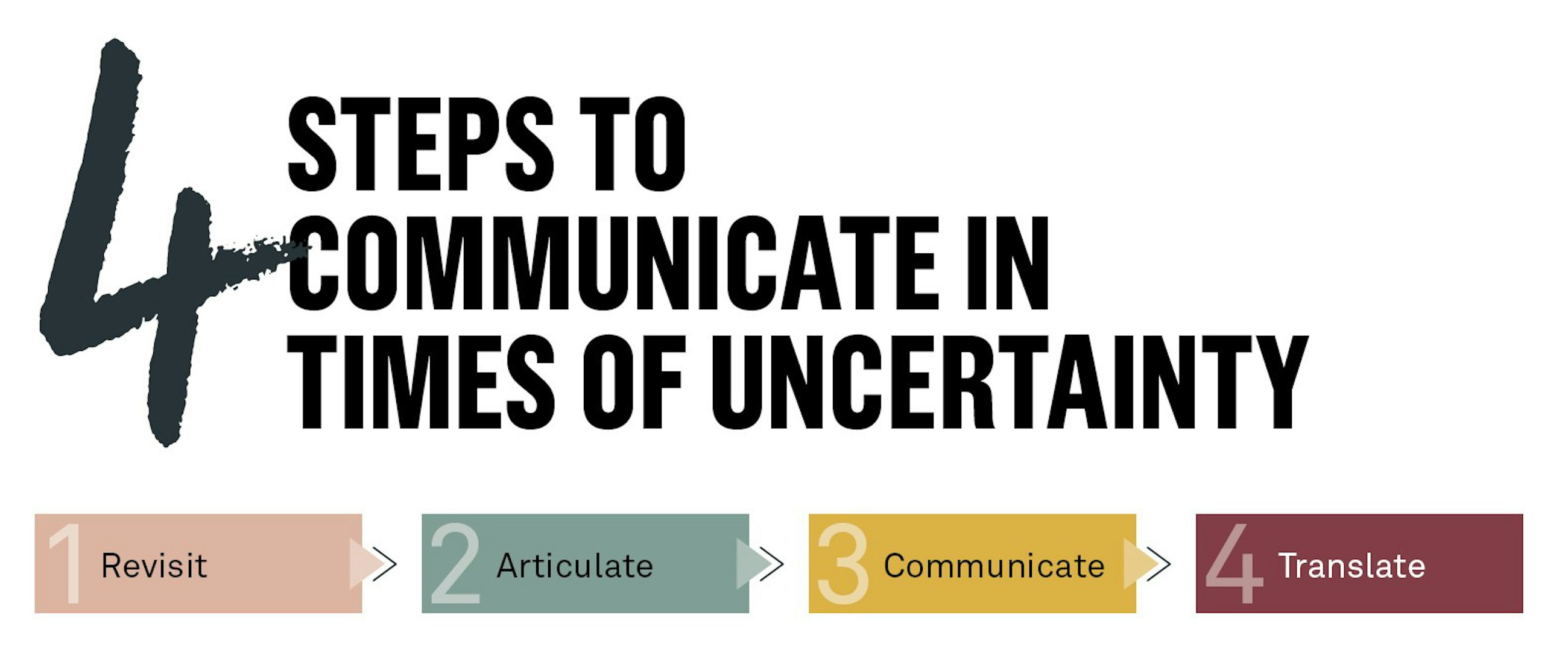How to create higher engagement and build a strong sense of belonging in your organisation through communication.
11 June 2020
All of us have been put to the test recently, as we have been forced to find new ways of working during the COVID-19 crisis. This new situation has created a lot of uncertainty and mixed feelings, which can influence employees’ motivation, productivity and engagement – both positively and negatively.
Revisit your purpose and direction on all levels
Direction and purpose exist on many levels in an organisation, not just at the top management level. Every company, business unit, team, project and individual needs direction and a feeling of purpose to thrive in the workplace. For some, their purpose will have remained the same during this period of high uncertainty with more or less consistently high levels of productivity. For others, their sense of direction will have shifted completely with huge dips in their engagement and motivation levels.
That’s why it’s important to take time to revisit your purpose and direction to see if it still holds up or whether you need to change it.
1. Revisit
We are spending most of our time navigating through turbulent times and focusing on the most critical short-term fixes. Take your time and focus instead on the long-term purpose of your organisation. It is more important now than ever to really reflect on your organisation’s values and communicate a clear purpose and direction in light of the crisis.
2. Articulate
Articulate your revised purpose and direction in a core story. Co-create the core story with your team by building a shared narrative with a broad basis, rather than purely from an individual perspective. A good core story consists of two building blocks: the WHY and the WHAT. Written in relatable, human language, you should speak to the hearts and minds of your employees. Your purpose should be the intended goal of the core story, while your business profitability is just a means of achieving it.
3. Communicate
Communicating purpose and direction is not a one-off exercise – it requires a campaign approach. Look at the core story as the point of departure for your communication and keep building momentum by continuously communicating your purpose. Use a multi-channel approach, but make sure that all channels and communication formats can also convey the emotional element of your purpose.
4. Translate
Communicating direction and purpose isn’t just about communication – it’s also about action. The organisation needs to know how to walk the talk. Depending on the level of departure, breaking purpose and direction down into concrete actions and behaviours on subsequent levels can be key. This is where direction and purpose are anchored both within the organisation and with your clients. And this builds a level of trust that is needed in times like these.
Build a sense of belonging
Clear and consistent communication about the organisation’s purpose and direction is key to boosting morale, motivation and productivity in times of a crisis. Creating a common narrative that employees can rally around will also instil a sense of belonging which can help settle feelings of uncertainty by empowering everyone to tap into the shared sense of purpose and ultimately, setting your organisation up to come out of these turbulent times stronger than ever.




